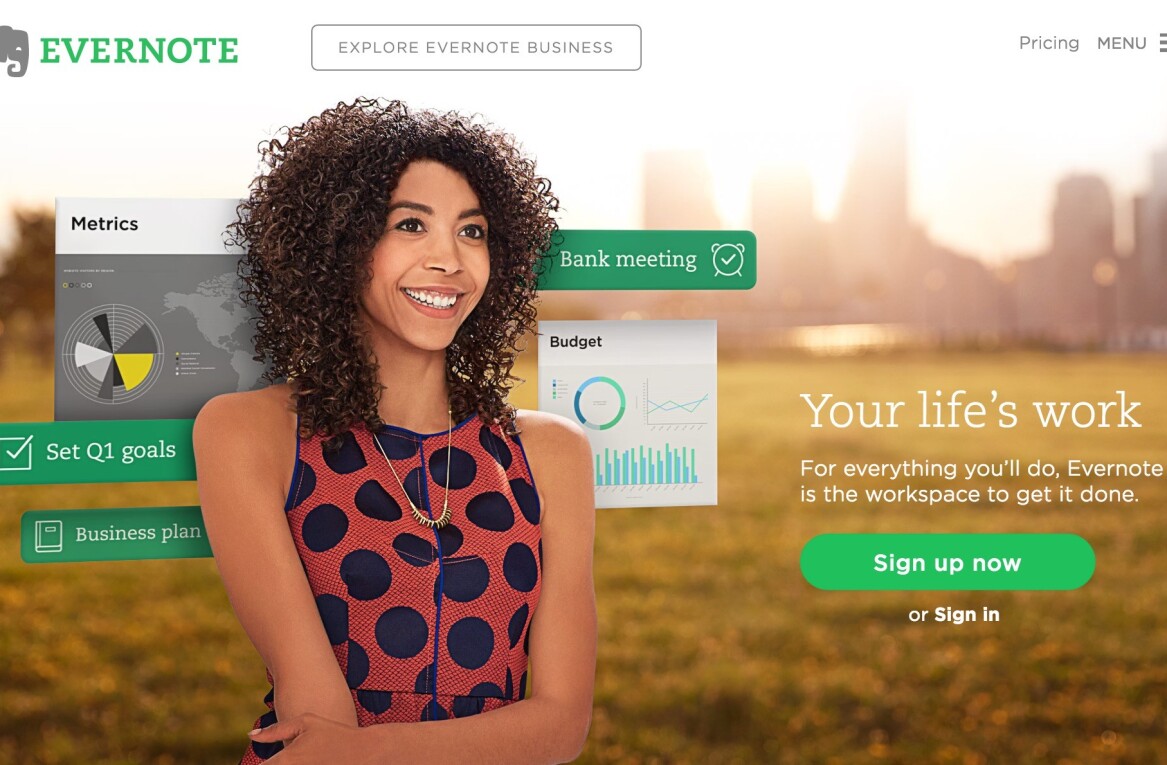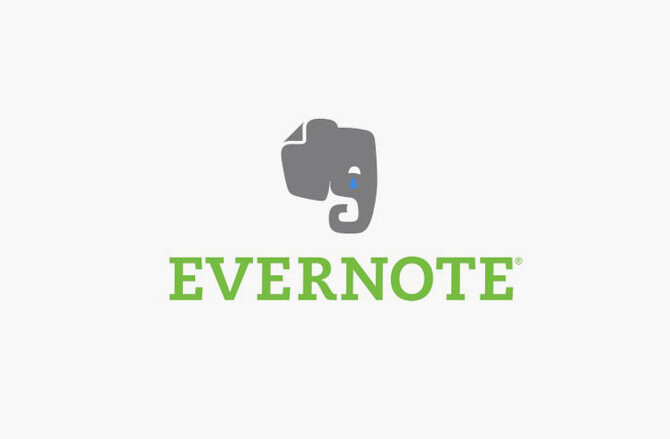
Who uses Evernote? Anyone with a less than perfect memory who uses a computer, smartphone or tablet can appreciate Evernote. And for the luddites with the lined notepad, you can even use Evernote using Livescribe.
A priest uses Evernote to compose his weekly sermon while one man uses it to keep track of his weekly sins. A veteran suffering from traumatic brain injury uses it daily to literally remember everything and is showing other veterans with similar disabilities how to do the same. A musician uses Evernote to compose songs, tracking snippets of melodies with audio recordings and jotting down lyrics and sketches as they tap him on the shoulder. A hairdresser uses Evernote to catalog before and after shots of her clients. During the hair cut, she lets them browse through the portfolio of looks on her iPad. A tempura chef in Japan uses Evernote to store all his recipes and images of his best dishes. A wife uses it to store up all the things she wants to tell her husband before he comes home from work. A piano teacher uses audio notes to record her students, and then shares these recordings in shared notebooks with the students’ parents.
Students keep track of their notes, teachers plan lessons, shoppers create shopping lists, travelers create trip plans and photo journals and journalists write stories. The possibilities are endless, and the best part is that they’re evolving as the Evernote platform continues to grow. What currently serves 13.5 million people as an external brain, could one day, in the not-so-distant future, be a portal backwards in time. But more about parallel realities later.
In a recent Lifehacker poll, Evernote took the top spot as today’s most popular note taking application, beating out pen/cil and paper, Microsoft OneNote, Springpad and Simplenote. Evernote is currently growing at a rate of 1.2 million users per month, averaging over 40,000 signups every day, which is enough people to fill Madison Square Garden, twice.
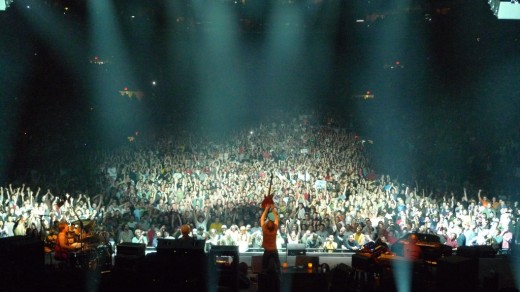
While you can use Evernote for free, forever, out of those 13.5 million, there are approximately 600,000 paying subscribers, representing a 4.5% conversion rate of free to paying subscribers. While there are a slew of premium features (advanced collaboration features, more versatility and monthly uploads of 1GB each month) worth dishing out $5 a month/$45 a year for, founder and CEO Phil Libin believes that the best predictor of a customer converting to the paid version is how long they’ve been using the system. While you can use the full featured version for free, forever, Libin thinks as you store more of your life and your memories it will become more valuable to you the longer you use it, thus prompting you to want to pay for it.
“The conversion percentage isn’t what I really care about,” says Libin. “We can break even at 1%. If my goal is to have a million paying users, then I hope to have 100 million people using it for free. I don’t want our conversion rate to go any higher than 5%, because that means we don’t have the best free product that we should.”
Evernote currently boasts a near 100% long-term user retention rate. In his speech this past March at SXSW, Libin said that in a post-scarcity economy, the new primary driver is love, and what determines the value of your company is how much people love it. As you store more and more of your personal notes, memories and work in Evernote, essentially giving it immense personal value, how can you not grow to love it? Now, that’s a perfect business model.
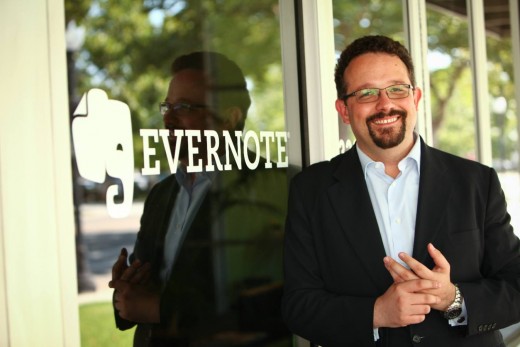
Libin (pictured above) grew up in the Bronx and was the nerd with the calculator watch. After attending Boston University, he started a company that made government security software. “But I wanted to make something that a billion people would wake up and get excited about,” he says. “Human memory is universal. No one is happy with their human brain. So I decided to make a product around that.” During the summer of 2007, Libin combined two teams of software engineers to create Evernote, which they opened up in beta in June 2008. In case you were wondering about the logo, it is a nod to the popular myth: “An Elephant Never Forgets.”
In the beginning, they were never more than a few weeks away from going out of business. It got particularly bad until one evening, a Swedish user sent Libin a note saying how much he loved the product and he’d be happy to help if the company needed money. A check for $500,000 got them back on their feet. This past July, 2011 Evernote raised $50 million in Series D funding, led by Sequoia Capital and other venture capital companies to bring its total funding to $87 million to date. Libin told Reuters this week that an IPO is inevitable, but the company is not in a rush to test the public markets. He said if market conditions remain as they are, the company will go public in 2013.
After salaries, operations are Evernote’s biggest costs, including its massive data center in California with a couple thousand servers and an in-house team. A note on data security, Evernote also has backup servers in a separate location and in addition to the cloud, all of your Evernote data is stored locally on your computer and your mobile phone.
Now the issue is how to grow the team. Just this week, Evernote hired its 101st employee. There are 70 employees at its Mountain View headquarters and there will be 12 people in its new Austin studio by the end of the year. The company is hiring in Tokyo and Moscow and plans to open up offices in Singapore, Switzerland and South America soon. Interestingly, Evernote is wildly popular in Japan, where there have been over 22 books published about the company. In the future, Libin says they will have offices in cities all over the world, not sales offices, more like ‘spreading the Evernote love offices’.
“Our goal and focus has always been to make something great, which is why I think we’ve been successful. And the world has aligned itself in such a way that that effort is enough for now. Before, you couldn’t have succeeded by just making a great product. You needed distribution and advertisement. Now, we have app stores, freemium models and social media,” says Libin.
“It’s the time of the Geeks,” writes product marketer Vimal Tripathi about Evernote. “App Store + Cloud Computing + Open Source + Social Media + Freemium = Geek Meritocracy.”
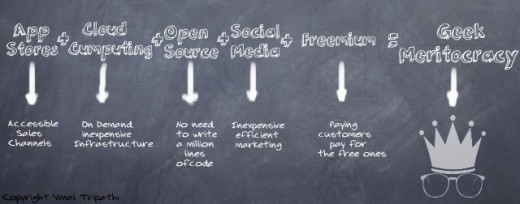
As you can imagine, Google and all the usual suspects have tried to buy Evernote. But, “It’s a 100 year company, says Libin. “We don’t have an exit strategy and we’re not going to sell.” In August, Evernote started buying, starting with Skitch, an Aussie-based image editing and annotation tool.
“Skitch is huge. I’m completely in love with Skitch. We’ve all been using it for years and it’s the first company that I ever bought,” Libin says. “About a year ago, we were sitting in the Evernote offices and we’d just rejected someone’s offer to buy us. I then said, ‘I don’t want to talk about who’s going to buy us. That’s not going to happen. Let’s flip it around. Who should we buy?’ Everyone said Skitch.'”
According to Libin, Skitch’s current integration with Evernote is only the tip of the iceberg. He likens Skitch to the modern day version of cavemen communicating through sticks. “It’s the ultimate communication and iteration tool on a touch device as it can be used to annotate, collaborate and draw attention to all kinds of work,” he says. This year, the new and autonomous Austin studio will be primarily focused on developing the Skitch integration.
In many ways, we’re just seeing the tip of the iceberg for Evernote too. In the future, an app like Evernote could serve a multitude of unforeseen purposes e.g. Kindle readers might easily store quotes in Evernote with the tap of a green button or Alzheimer’s patients could be trained to use Evernote to record all their thoughts and feelings. “Evernote can be used in so many different ways, so we will naturally be taken into different areas. It’s not something that your typical Silicon Valley tech startup will think about,” comments Libin.
Now, you are likely wondering what Evernote has to do with time-travel and parallel realities? So, the basic idea of Evernote is that it’s a place to store all of your meaningful and important memories. Those memories tend to be most poignant while you’re listening to a movie, reading a book, and generally when you’re consuming some kind of medium. Beyond helping you store a particular memory or experience, Evernote wants to help you remember the context. Imagine you’ve been using Evernote for years and at one point you wrote a journal entry while listening to music in Evernote. Now imagine revisiting that note years later and all of a sudden a few chords from that same song starts to play, prompting a flood of contextual memories.
Right now, you are living what’s referred to as “an examined life” by using applications like Evernote, Runkeeper, Foursquare, Twitter, Facebook and Google which capture fragments of your digital self. But what if a program could follow your whole life, and you’d simply tap a green button on your phone, or your wrist implant to store what’s happening around you in an external memory- a phrase, a piece of music, the weather, your vital signs and your mood at that particular moment? If data aggregation and social technology continue iterating (which they undoubtedly will), those fragments will be put together in a holistic way, and they will become your digital avatar.
By allowing you to relive the past through your stored, contextual memories, you could effectively (albeit digitally) travel back through time and re-experience those memories through your digital avatar. I know it’s a lot to take in. But imagine explaining Facebook to your Grandmother in 1940. It’d be a lot for her to take in too.
Now, fast forward 100 years. I started using Evernote at age 26. Now, I’m 126 and I’ve been physically dead for 20 years after a bike riding accident in Provence at the age of 106. But for years after my death, for an eternity, my children and their children, could pour through my memories in a multimedia fashion, revisiting my life in a way that the present day diary keeper could only desperately imagine.

So might you be able to time travel through your memories one day? And will Evernote be the vessel that takes you there?
Libin wants to be clear that Evernote isn’t a science experiment. It’s technology delivered to a mainstream audience. So, for now, Evernote is working on delivering you a richer, multimedia, memory storing experience. And while Evernote may not publicly talk about what Libin describes as “quasi sci-fi” I asked him who he knows in the field that’s working on this type of research. He said, “Oh, we know them. We’re hiring them.”
Image Credits: Shutterstock/Bruce Rolff/Donovan van Staden
Get the TNW newsletter
Get the most important tech news in your inbox each week.

